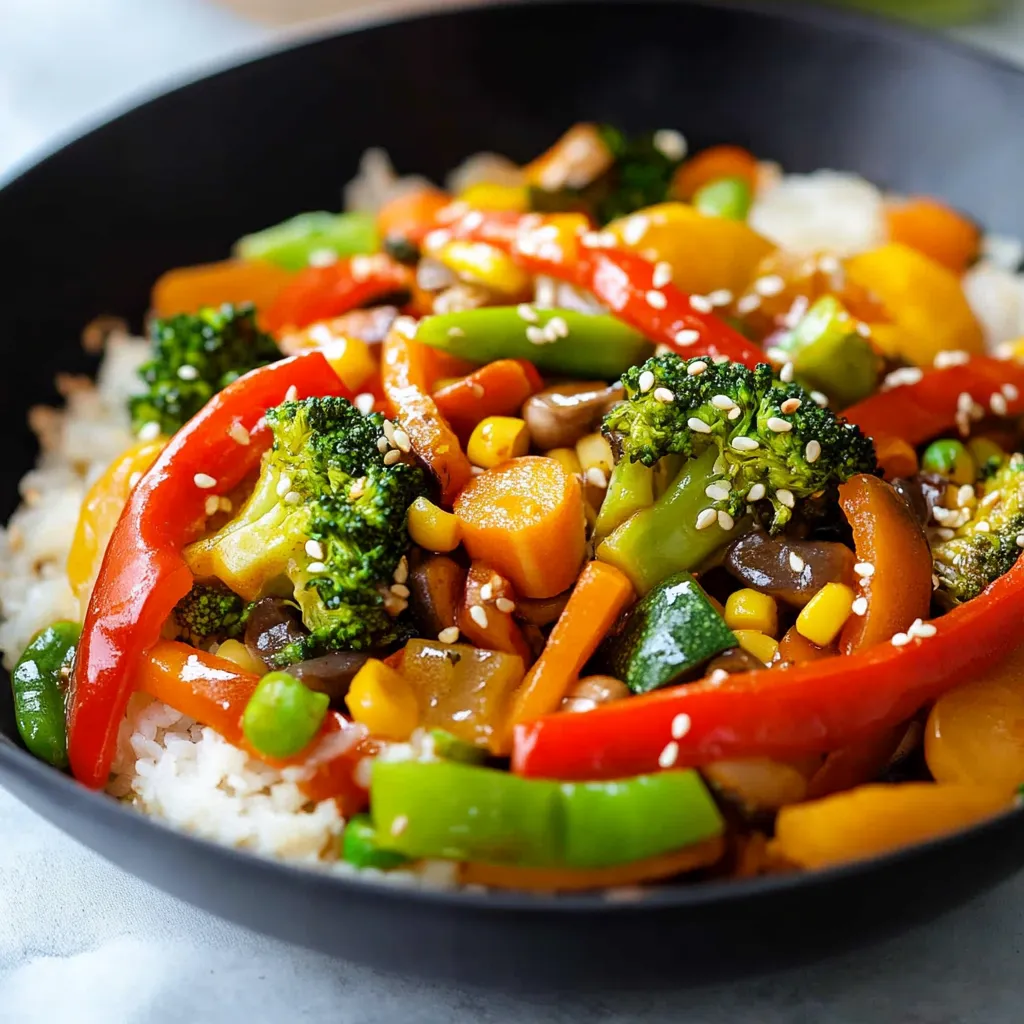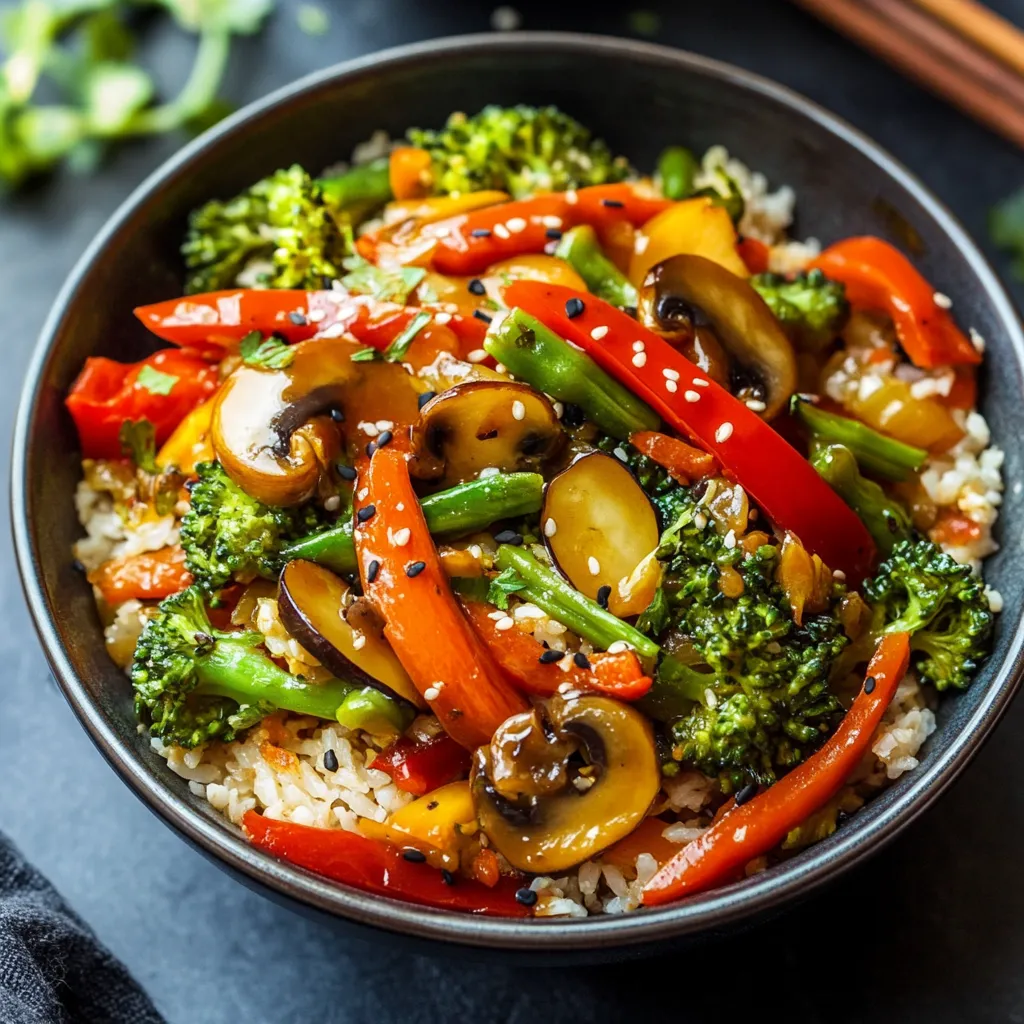 Pin it
Pin it
Turn basic veggies into a colorful, juicy stir-fry that beats takeout any day. This adaptable meal brings together snappy vegetables with a thick, homemade sauce that wraps around every bite just right.
I've tried so many different stir-fry methods over the years and found that getting the timing right and nailing the sauce thickness makes all the difference. This has become what my family asks for whenever we're short on time.
Key Ingredients Breakdown:
- Vegetables: Go for crisp, fresh options
- Soy Sauce: Pick reduced-salt for taste adjustment
- Ginger: Always use the real root, not jarred stuff
- Garlic: Fresh cloves, just minced
- Oil: Something that won't smoke easily like canola or peanut
- Sesame Oil: Go for the dark toasted kind
- Cornstarch: Can't skip this for thickening
Cooking Directions:
- Making Your Sauce:
- Stir together brown sugar, grated ginger, minced garlic, sesame oil, and soy sauce in a bowl. Blend cornstarch with cool water until it's smooth, then mix into your sauce blend. Put aside.
- Getting Veggies Ready:
- Chop everything roughly the same size so it all cooks evenly. Group them by how long they take to cook: tougher stuff (broccoli, carrots), middle group (peppers, mushrooms), quick ones (snap peas).
- First Cooking Step:
- Get a big wok or pan super hot. Add your oil and wait till it shimmers. Start with the tough veggies like carrots and broccoli first.
- Middle Cooking Step:
- After about 2-3 minutes, throw in your medium veggies. Keep everything moving in the pan. You should hear a sizzle when stuff touches the bottom.
- Last Cooking Step:
- Toss in the quick-cooking veggies last. Keep stirring until everything feels tender but still has some crunch, about 5-6 minutes total.
- Adding Your Sauce:
- Pour sauce around the sides of your pan so it runs down into the mix. Toss everything fast to coat it all. Cook until your sauce gets shiny and thick.
 Pin it
Pin it
The trick to amazing stir-fry is all in how you get things ready. My grandma always told me to set up veggies like an artist lays out their paint palette.
Managing Your Wok Heat
Getting the heat just right makes veggies cook fast but stay crunchy. Don't throw cold sauce into a super hot pan - it should just barely bubble when added. Use max heat for cooking veggies, then slightly lower when adding sauce.
Nailing The Sauce Consistency
Let your sauce bubble gently while you stir it until it coats the back of your spoon. It needs to be shiny and just thick enough to stick to your veggies without getting gummy or pasty.
Keeping Leftovers Fresh
Store what's left in a sealed container for up to 3 days. When you warm it up, do it fast in a hot pan to keep some crunch. Don't try freezing it or your veggies will turn soggy.
Ways To Serve It
Drop it over some hot rice or noodles. Add some chicken, tofu, or shrimp to make it a full meal. Sprinkle some green onions and sesame seeds on top before serving.
 Pin it
Pin it
I now turn to this method whenever I've got seasonal veggies to use up. The flexible sauce and cooking approach can transform pretty much any mix of vegetables into something that tastes way better than what you'd get delivered.
Frequently Asked Questions
- → Can frozen veggies be used?
- Totally, but let them thaw and drain them properly to avoid soggy results.
- → Is the sauce okay for gluten-free diets?
- Swap soy sauce with tamari to make it gluten-free.
- → Can I prep veggies ahead of time?
- You bet. Slice them up to two days before and store in airtight containers.
- → Any proteins I could throw in?
- Tofu, shrimp, beef, or chicken all work. Cook them first, then add to the dish.
- → What’s the best way to store leftovers?
- Keep them in the fridge for three days max, and reheat them fast in a wok for the best texture.
